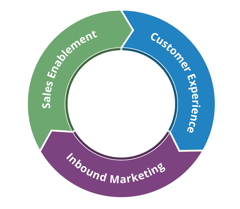In an age where data is abundant and complex, the ability to make sense of it is a critical skill. The role of data visualization in transforming raw numbers into clear, actionable insights is undeniable. Understanding the elements of data visualization not only aids professionals in data analysis but also supports the objective of informed decision-making in any organization. Below are 6 data visualization practices that you can implement at your organization, but first, let's unpack the basics of data visualization.
Unpacking the Basics of Visual Data Representation
Data visualization isn't just about throwing numbers onto a graph; it is an interdisciplinary field that uses visual elements to represent data patterns, making them easier to understand and interpret. Technology Innovators notes that charts, graphs, and heatmaps are just a few of the techniques that help break down complex data into digestible formats.
This visual transformation allows for the absorption of information in a quicker and more efficient manner. Furthermore, by converting data into a visual format, one can immediately identify trends, outliers, and distributions that might have been otherwise overlooked.
1. Take Advantage of PDFs
Using PDFs to share data visualization findings offers a seamless way to ensure documents are easily viewable, printable, and shareable across various platforms, all while preserving the original formatting and layout. For those instances where it's necessary to correct the alignment of scanned documents, employing a PDF rotator allows you to adjust the orientation of pages to either portrait or landscape mode. Once the pages have been rotated to your satisfaction, you can effortlessly download and distribute your well-organized PDF to your audience.
2. Unveiling Hidden Trends and Patterns
LinkedIn points out that data visualization serves as a magnifying glass for data, illuminating otherwise hidden trends and patterns. It provides a dynamic platform to scrutinize complex data sets by converting them into simpler visual formats. This immediate feedback helps in making prompt adjustments, allowing for real-time problem-solving. As a result, businesses can be more agile and proactive in implementing new strategies, from product development to customer service.
3. Utilizing Machine Learning
Data visualization and machine learning form a powerful combination for dissecting and comprehending large datasets. By leveraging machine learning, we can uncover intricate patterns and relationships within the data, which might be too complex or subtle for traditional analysis methods. Data visualization steps in to bridge the gap between these sophisticated algorithms and human understanding, presenting these findings in an intuitive and accessible format. This synergy not only facilitates a deeper understanding of complex systems and enhances decision-making but also encourages a methodical approach to problem-solving by breaking down larger challenges into more manageable segments.
4. Evaluating ROI Visually
Return on investment is a critical metric for any business, and data visualization tools offer a robust way to track and analyze ROI. Through graphical elements, these tools display the performance of different investments, making it easier to identify which are yielding the most significant returns. By visualizing this data, resource allocation decisions can be made more accurately, ensuring that capital is invested in the most promising avenues.
5. Better Decision-Making With Data Visualization
Data visualization plays a pivotal role in the decision-making process. By translating complex data sets into easily interpretable visual formats, uncertainty is minimized. This lends itself to more precise strategy formation and execution, making decision-making quicker and more effective. Data visualization serves as a guiding light, helping to avoid pitfalls and navigate toward success.
6. Segmenting Customers for More Targeted Strategies
Understanding customer behavior is essential for effective marketing. Data visualization techniques can categorize customers into distinct groups based on various parameters like purchasing behavior, geographical location, or age. This enables more targeted and personalized marketing campaigns. Knowing exactly who the customers are and what they want makes for more focused marketing strategies that are likely to yield better results.
The role of data visualization extends far beyond mere aesthetics or simple data representation. It serves as a cornerstone in data analysis, benchmarking, ROI assessment, and customer engagement, among other key areas. The capability to transform complex data into comprehensible visuals equips businesses to navigate through an increasingly data-heavy environment, resulting in well-informed decisions and sustainable competitive advantages.
Elevate your marketing with Prism Global Marketing Solutions, a HubSpot Platinum Partner offering unparalleled inbound marketing expertise. Start transforming your strategy and see real results by scheduling your free consultation today!
Guest Author: Gloria Martinez loves sharing her business expertise and hopes to inspire other women to start their own businesses and seek promotions in the workplace. Her brainchild, Women Led, is an avenue for her vision to help women advance in the workplace and celebrate their achievements.

.png?width=80&height=80&name=diamond-badge-color%20(1).png)
__Square.png?width=250&height=250&name=Marketing_Hub_(1)__Square.png)




.png?width=250&name=diamond-badge-color%20(1).png)
